Marvel Snap Competitive Scene: Guide to Tournaments, Leagues, and Meta
Updated On: October 23, 2025 by Aaron Connolly
What Is the Marvel Snap Competitive Scene?

The Marvel Snap competitive scene keeps growing as more players jump into organised tournaments, leagues, and special events. Folks battle it out in structured formats with real prizes, from community-run showdowns to those big official tournaments backed by Second Dinner.
Overview of Competitive Play
You’ll find Marvel Snap’s competitive scene running on a bunch of different tournament formats and events. The Golden Gauntlet World Championship Series stands out as the main official competitive push, offering three regional qualifiers that all lead up to a global championship.
Most tournaments start with a Swiss format in the early rounds. Players face others with similar records instead of getting knocked out after one loss. The top players move on to single-elimination playoffs.
Battle Mode lets you go head-to-head against friends or rivals, skipping the ranked ladder. This mode is the backbone for a ton of tournaments.
Tournament entry requirements can be all over the place:
- No rank restrictions for the big events
- Open registration no matter your collection level
- Free entry for most community tournaments
- Player caps anywhere from 128 up to 1,000+
Prize pools usually start at about £40-250 in community events. Official tournaments up the ante with bigger rewards for those who finish on top.
Evolution of the Competitive Landscape
Battle Mode’s arrival really kicked things off for Marvel Snap’s competitive scene. At first, you’d see community tournaments with 120-130 players fighting for a humble £40 prize.
Independent groups like Battle Arena stepped in and started running regular events with £250+ prizes. These grassroots tournaments set the standards and rules before the game got official support.
Second Dinner’s Golden Gauntlet series was their first big investment in competition. Regional qualifiers make sure everyone gets a fair shot, with APAC, Americas, and EU events all feeding into the world championship in November.
Leagues let players compete in smaller groups over a set period. You go up against others with similar skill and earn rewards based on your spot on the leaderboard, not just by surviving an elimination bracket.
Content creators and community leaders have really fueled this scene. They stream matches, hype up events, and help build a following for competitive Marvel Snap.
Differences Between Ranked and Competitive Modes
Ranked play follows Marvel Snap’s usual ladder, with Infinite rank at the top. You climb up by playing seasons using the Snap and Retreat mechanics in regular matchmaking.
Competitive tournaments are all about direct battles between specific players. Battle Mode takes away random matchmaking, so organisers can set up proper brackets.
Here’s how the two modes stack up:
| Ranked Mode | Competitive Mode |
|---|---|
| Random opponents | Organised brackets |
| Season-long progression | Single-event focus |
| Individual climbing | Head-to-head elimination |
| Standard rewards | Prize pools for winners |
| Ongoing availability | Scheduled tournament times |
Tournaments usually ask you to submit your deck before the event. You have to stick with your chosen strategy, unlike ranked play where you can swap decks whenever.
Swiss rounds in tournaments give you more varied opponents. Ranked games sometimes feel repetitive if you keep running into the same deck types.
Time pressure feels different too. Tournaments have strict schedules and time limits, while ranked play lets you jump in whenever you like.
Major Competitive Formats
Marvel Snap’s competitive scene runs on official leagues, online tournaments, and loads of grassroots events. You can play through Second Dinner’s Leagues system, join major series like the Golden Gauntlet World Championship, or jump into smaller community competitions.
Leagues and Organised Play
Second Dinner brought in Leagues as the official competitive format. The system matches you with a group of players at your skill level for a set period.
You climb leaderboards and grab rewards based on how you do. Leagues give you a solid competitive vibe without the stress of a giant tournament.
It’s all about steady play over short bursts. Leagues let you play competitively without worrying about scheduling conflicts or missing a big event.
A lot of players use Leagues as practice before they step into bigger tournaments. It’s a handy bridge between the ranked ladder and the high-stakes stuff.
Online Tournaments and Events
The Golden Gauntlet World Championship Series is the biggest thing going for Marvel Snap competition right now. Second Dinner teamed up with GAME ON EVENTS to make this happen.
Each series has three regional Open Qualifiers leading up to a global championship in November. Every Open runs 6 rounds of Swiss, then a Top 16 single elimination.
Registration maxes out at 1,024 players per Open. Anyone can enter—no rank or collection requirements, and it’s totally free.
Heads up: Tournament spots disappear fast, so you’ll want to register right when they open on Discord.
They stream matches live on Marvel Snap’s Twitch and YouTube channels. If you finish 5-1 or better, you qualify for the World Championship.
Grassroots Community Competitions
Community tournaments are the backbone of Marvel Snap’s competitive life. Early on, these events drew more than 120 players for $50 prize pools.
Most of these use 7 Swiss rounds of Best of 1, then a Top 8 single elimination. That format pops up everywhere in the community.
Marvel Snap Zone keeps a handy deck database and tournament resources. Over on Reddit, r/marvelsnapcomp helps players find events and connect with others.
Quick tip: Hop into Marvel Snap’s competitive Discord channels to find tournaments that fit your skill level.
Tons of content creators and organisers run weekly or monthly events. These smaller tournaments often try out different formats or special rules.
Key In-Game Features Enabling Competition
Marvel Snap’s competitive side really leans on three main mechanics for depth and real stakes. The snap system lets you wager ranking points mid-match, and cubes are the currency that moves you up through the ranks.
Battle Mode Mechanics
Battle Mode flips Marvel Snap from casual to competitive. You can challenge friends, family, or anyone you want—no more waiting for random matchmaking.
All the core rules stay the same, but now you know exactly who you’re up against. You’ll still play across three locations with six turns.
Battle Mode features:
- Invite friends directly
- Set up custom lobbies
- Let spectators watch for tournament streams
- Same rules every match
This mode is why tournaments and leagues work so well. Battle Mode avoids a lot of the connection headaches other card games get, thanks to its stable peer-to-peer setup.
Organisers can run real bracket-style competitions. Players move through elimination rounds with clear winners and losers, which makes Marvel Snap a legit fit for esports.
Snap and Retreat Dynamics
The snap mechanic is what really gives Marvel Snap its edge. You can double the stakes mid-match by snapping, which forces your opponent to either accept a bigger risk or bail out.
Most players snap when they’re pretty sure they’ll win. The other side has to decide—do they stay and risk double cubes, or cut their losses?
When to snap:
- Turn 4 or 5 if your combo is coming together
- When your opponent’s board looks weak
- Right before the final turn reveals
Retreating is just as important. Top players back out early if the matchup looks bad instead of hoping for a miracle.
This risk-reward dance brings a kind of mind game you don’t see in every card game. Reading your opponent and minding your cubes can turn a good player into a real threat.
Role of Cubes in Competitive Matches
Cubes are Marvel Snap’s ranking currency and how you measure your stakes. Every match starts with one cube, but snapping can push it up to two, four, or even eight cubes.
Your cube total is what moves you up the ranks. Hitting Infinite takes steady cube gains, not just racking up wins.
Cube management styles:
- Play it safe: Only snap when you’re sure
- Go aggressive: Snap often to pressure your opponent
- Mix it up: Snap when the matchup feels right
Competitive players care more about cube efficiency than just win rates. Winning 60% of your games but managing cubes well usually beats a 70% win rate with sloppy snapping.
The system rewards players who can read the room and manage risk. You climb by making smart calls, not just by grinding out games.
Official and Third-Party Tournaments
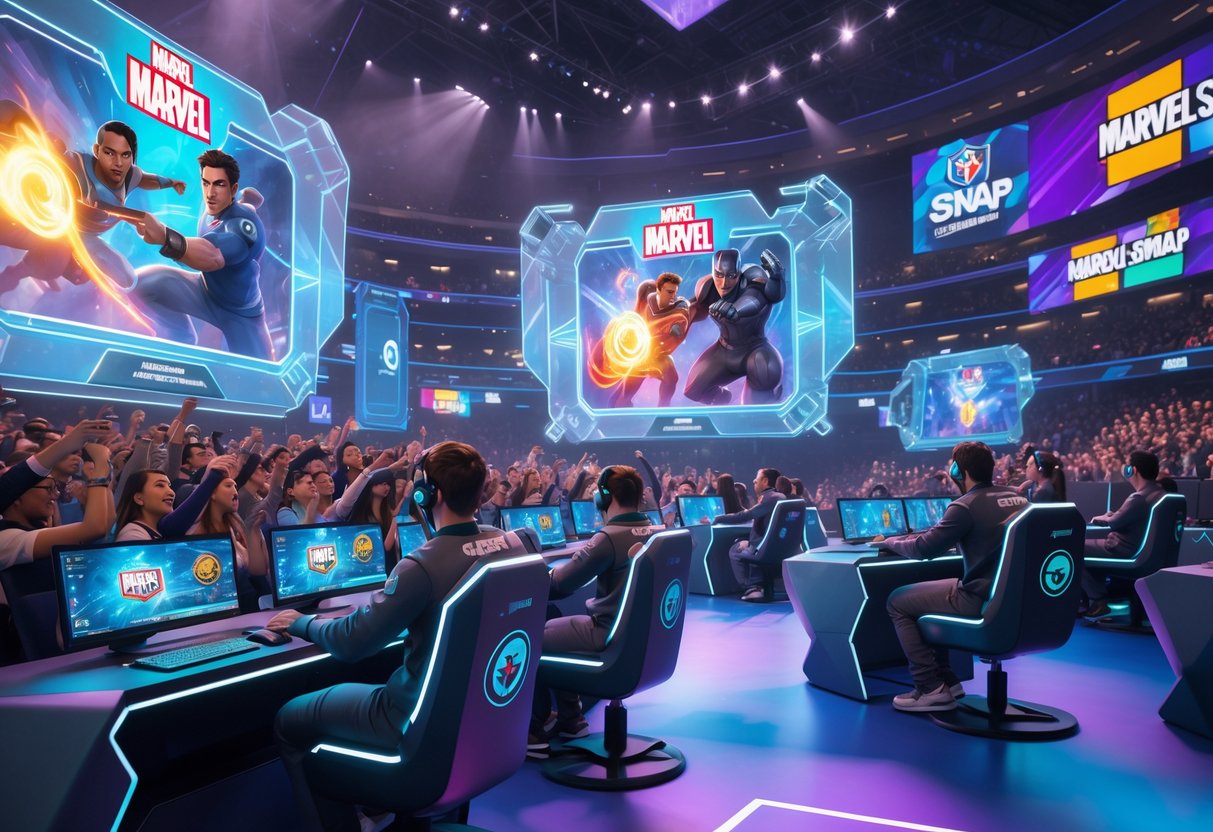
Marvel Snap’s competitive action comes from both official championships and a ton of community events. Players jump into everything from small Discord tournaments to big prize pools worth thousands.
Marvel Snap Zone Competitions
Marvel Snap Zone puts together some of the most organised third-party tournaments around. These usually run every month, with entry fees that range from free up to about £10.
You’ll find both casual and competitive brackets. New players can try beginner-friendly events, while veterans fight for the bigger prizes.
Most events use Swiss rounds followed by single elimination. This way, everyone gets a few games in, even if they lose early.
Tournament Structure:
- Swiss Rounds: 4-6, depending on signups
- Top Cut: Usually top 8 or 16
- Prize Distribution: 60% to the winner, 40% split among runners-up
Signups open a week before the event. You’ll need Discord and have to submit your deck list a day early.
Reddit and Community-Driven Events
The Marvel Snap Reddit community runs weekly tournaments that often draw over 100 players. These are free to enter, with prizes coming from community donations.
Discord servers like “Snap Tournaments” host daily competitions. Most events welcome players of any skill level.
Community events get creative with formats. You’ll see deck drafts, budget deck challenges, and themed competitions—sometimes with rules like “Villains Only” or “No Series 5 cards.”
Popular Community Formats:
- Conquest: Best of 3 with deck bans
- Draft: Build decks from random pulls
- Themed: Restrictions like “Villains Only”
Prize pools usually fall in the £20-£100 range. Winners get paid via PayPal or game credits, usually within a week.
Global Championships and Major Prizes
The Golden Gauntlet World Championship Series kicked off in August 2025 as Marvel Snap’s first official tournament circuit. It’s free to enter and features the biggest prize pools so far.
Three regional qualifiers lead to the World Championship in November. Each qualifier takes up to 1,024 players, runs 6 Swiss rounds, then a top 16 playoff.
If you finish 5-1 or better, you qualify for Worlds. The final event brings together 300+ players for nine rounds of Swiss.
Golden Gauntlet Schedule:
- Open 1 (August): APAC & Western US
- Open 2 (September): Americas
- Open 3 (October): EU & Eastern US
- Worlds (November): Global finale
All matches stream live on Twitch and YouTube. This is the biggest move yet for Marvel Snap as a real esport.
Registration happens on the official Discord. Anyone can play—no rank or collection minimums.
Popular Deck Archetypes in Competitive Marvel Snap
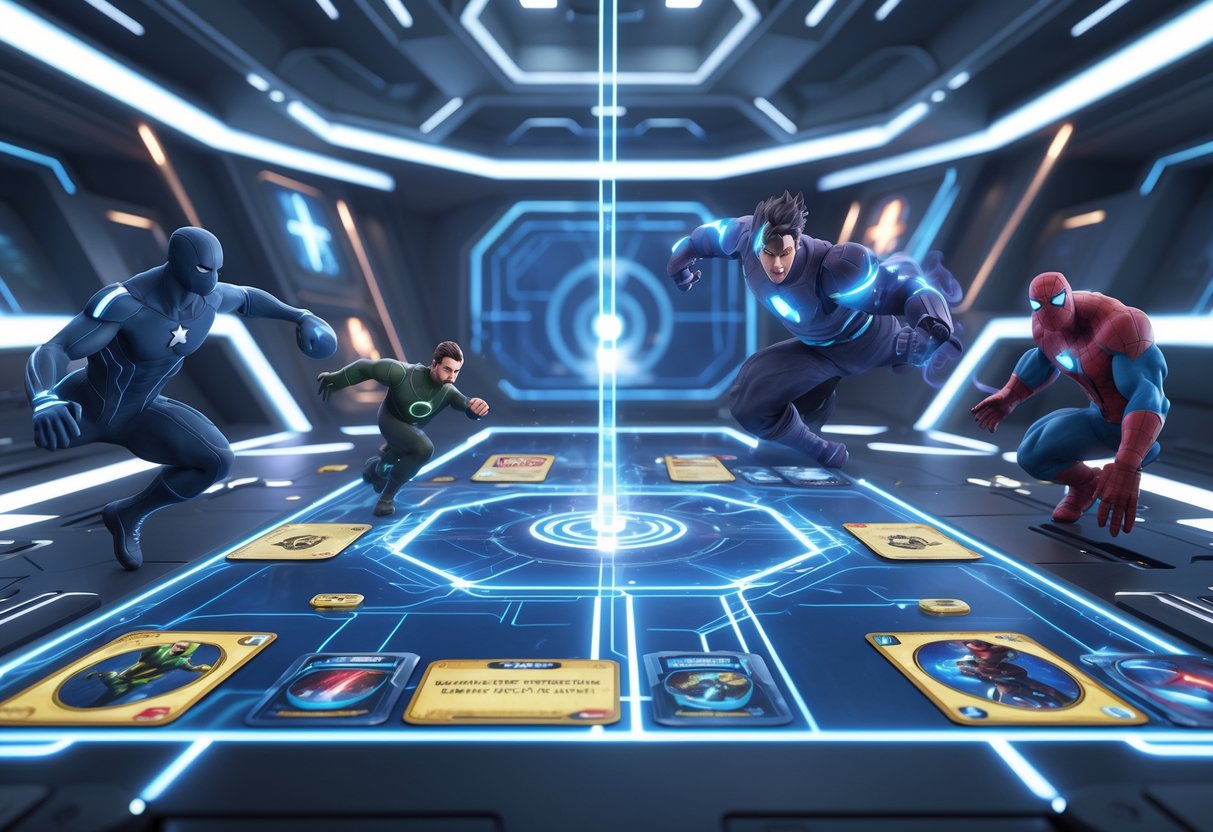
Competitive Marvel Snap really centers around a handful of deck archetypes that shape the meta. Each one relies on certain key strategies and cards that keep showing up among tournament winners.
Current Meta Decks
Destroy decks run the show in the current competitive scene by sacrificing cards for powerful effects. Each destroyed card makes Death cheaper. Knull just keeps growing stronger as you blow up more of your own cards.
Players usually throw in Carnage and Venom to eat their own cards. Nimrod pops out copies when you destroy it. The whole plan is to set up huge power swings on the final turns.
Move decks get value by shifting cards between locations. Multiple Man leaves copies behind every time he moves. Human Torch doubles his power whenever he moves, which gets out of hand fast.
Heimdall slides all your cards one lane to the right, creating sneaky wins by moving big cards where your opponent isn’t looking. Jeff the Baby Land Shark just goes wherever he wants, giving you a ton of flexibility.
Discard decks love throwing cards away for value. Apocalypse keeps coming back stronger every time you discard him. Swarm multiplies itself as you discard it.
Lady Sif targets your highest-cost card to discard on purpose. Blade discards random cards for tempo, but you’ve got to manage your hand carefully so you don’t lose something important.
Ongoing decks fill locations with permanent effects. Devil Dinosaur just gets bigger the more cards you keep in hand. Spectrum hands out boosts to all your Ongoing cards.
The Monastery location can really help these decks. Enchantress wipes out enemy Ongoing effects, but these decks often struggle if someone destroys the locations they need.
Deckbuilding Strategies for Tournaments
When you build decks for tournaments, you have to think about the conquest format. Bring three different archetypes so you don’t get totally countered. Mix up aggressive and control decks for balance.
Tech cards let you counter what’s popular. Enchantress shuts down Ongoing decks. Killmonger wipes out all those pesky 1-cost cards. Usually, two or three tech cards are enough for the meta you expect.
Energy curve is even more important in tournaments. Turn 1 plays set up your whole game. Finishers like Hulk or Doctor Doom seal the deal on turn 6.
Work on your snap timing until it’s second nature. Snapping doubles the cubes if you’re confident. Retreating early saves you cubes when things go south. The best players manage their cubes carefully through every match.
Location knowledge really separates the top players. Bar With No Name can randomly destroy cards. The Nexus shuffles hands between players. You’ve got to adjust your strategy for whatever the locations throw at you.
Influence of Balance Updates
Monthly patches shake up the competitive landscape every time. Card changes force everyone to rebuild their decks. New cards drop and suddenly there’s a whole new strategy to try.
Pool 3 additions often become instant tournament staples. Silver Surfer changed everything for 3-cost cards. Sera lets you pull off big 5 and 6-cost combos that weren’t possible before.
Nerf cycles go after the decks that get too strong. Wong combo decks took several hits. Zabu’s cost reduction got nerfed for specific card types.
Players need to adapt fast between tournament seasons. Following sites like Marvel Snap Zone helps you keep up with the meta. Testing new builds against what’s popular is pretty much required.
Regional differences pop up in tournaments too. European players lean toward control. Asian tournaments show off more aggressive tempo decks. Knowing these trends gives you a real edge.
Understanding the Meta and Analysing Trends
The Marvel Snap meta influences every decision you make in competitive play. The best players always keep an eye on deck popularity and counter-strategies to stay a step ahead.
How the Meta Evolves
Marvel Snap’s meta changes constantly with every new card and balance patch. New cards bring out fresh deck types, while nerfs can wipe out a top deck overnight.
Weekly meta snapshots from sites like Marvel Snap Zone and Untapped.gg help you track these shifts. After patches, you’ll see certain mechanics spike in popularity.
Right now, there are over 15 decks you could call competitive. No single strategy stays on top for long because things shift so fast.
What really drives these changes?
- New cards with unique mechanics
- Nerfs to overpowered decks
- Players finding weird, unexpected combos
- Location rotations that change deck viability
Hearthstone’s meta feels slow compared to Snap. The quick matches and constant updates mean what wins today might flop tomorrow.
Adapting to Deck Popularity
Watching popular decks helps you predict what you’ll face. We check cube rates and win percentages to spot rising threats.
How do you tell what’s popular?
- Lots of play in Infinite rank
- Strong showings in tournaments
- Decks that content creators talk up
- Big community buzz
When destroy decks start trending, we tech in cards that punish them. If move decks get common, we look for ways to limit their mobility.
The best players change decks every week. They read meta reports and hunt for counters that nobody else is playing.
Quick win: Just follow Marvel Snap Zone’s meta snapshots every week and you’ll spot trends before they explode.
Counter-Strategies and Tech Choices
Tech cards are those specific picks you add to beat popular decks. We trade a little raw power for the chance to ruin someone’s day.
Common tech moves:
- Anti-destroy cards when Knull decks are everywhere
- Location control to mess with move decks
- Disruption against combo strategies
- Power reduction to beat stat-heavy decks
Don’t overdo it, though. If you tech too much, your deck falls apart against everyone else. We look for cards that counter more than one meta deck.
Smart players spot patterns and tech for what’s really common. If three top decks share a weakness, we go after it.
The best tech cards support your main plan while disrupting the meta. We never ditch our win condition just to counter one deck.
Competitive Strategies and Mindset
If you want to master Marvel Snap’s competitive scene, you’re going to need sharp cube management, psychological awareness, and quick math skills. These things really separate the casuals from the players who actually climb the ladder.
Maximising Cube Gains
Snap timing matters more than your deck. You want to snap when you have a real edge, not just a decent hand.
Early snaps work best when you’ve got multiple ways to win. If you’re playing a move deck and have Heimdall plus other move cards by turn 4, just snap. Your opponent probably has no clue what’s coming.
Don’t snap blindly. Count how many cards in your deck can win you at least one location. If it’s under 40%, just retreat.
Late-game snaps depend on reading your opponent’s energy. If they’re playing off-curve or skipping turns, they’re probably missing something important. That’s your chance.
Track cube efficiency instead of just win rate. A 55% win rate with good snap timing beats a 70% win rate if you’re bad at managing cubes. Most top players aim for about 0.5-0.8 cubes per game.
Sometimes, losing just 1 cube instead of 8 is a win. Recognise when the locations are stacked against you and get out early.
Bluffing and Reading Opponents
Every play gives away information, whether you mean it or not. Dropping Sunspot on turn 1 screams energy ramp. Early Ant-Man hints at a zoo deck.
You can mislead your opponent in the first few turns. Play cards that fit in different archetypes. Armor works in both destroy and ongoing decks, so your opponent can’t be sure what you’re doing.
Watch how your opponent spends energy. If they’re saving up on turns 4 or 5, they might be holding Galactus or another big finisher. Playing right on curve usually means a midrange deck.
Location choices tell you a lot. If someone ignores a great location, they might be bluffing or just have a better option. Test with small plays to see what’s up.
Retreat patterns show skill. Good players bail instantly when things look bad. If someone stays in a losing game, they probably don’t have a way out.
Sometimes, you can snap with a mediocre hand just to make your opponent retreat. The snap itself is a bluff tool.
Improving Mental Maths and Decision Making
Count your power, don’t guess. The difference between 23 and 25 power can decide a game.
Try the ‘two-location rule’—if your hand can win two out of three locations, snap. If you need perfect draws, maybe retreat instead.
Locations change the math. Throne Room doubles one card’s power, so play your biggest hitter there. The Peak needs a perfect 1-2-3 curve, or your hand might just brick.
Keep track of your odds. If you’ve got three cards left and need one, that’s about a 25% shot per draw. Use that to time your snaps.
Energy matters. Sometimes, playing a 3-cost card that sets up your 6-cost finisher is better than just dropping a 5-cost now.
Quick tip: Use the collection tracker to remember exact power numbers for your favorite cards. It’ll save you from dumb mistakes in close games.
Comparisons with Other Card Games
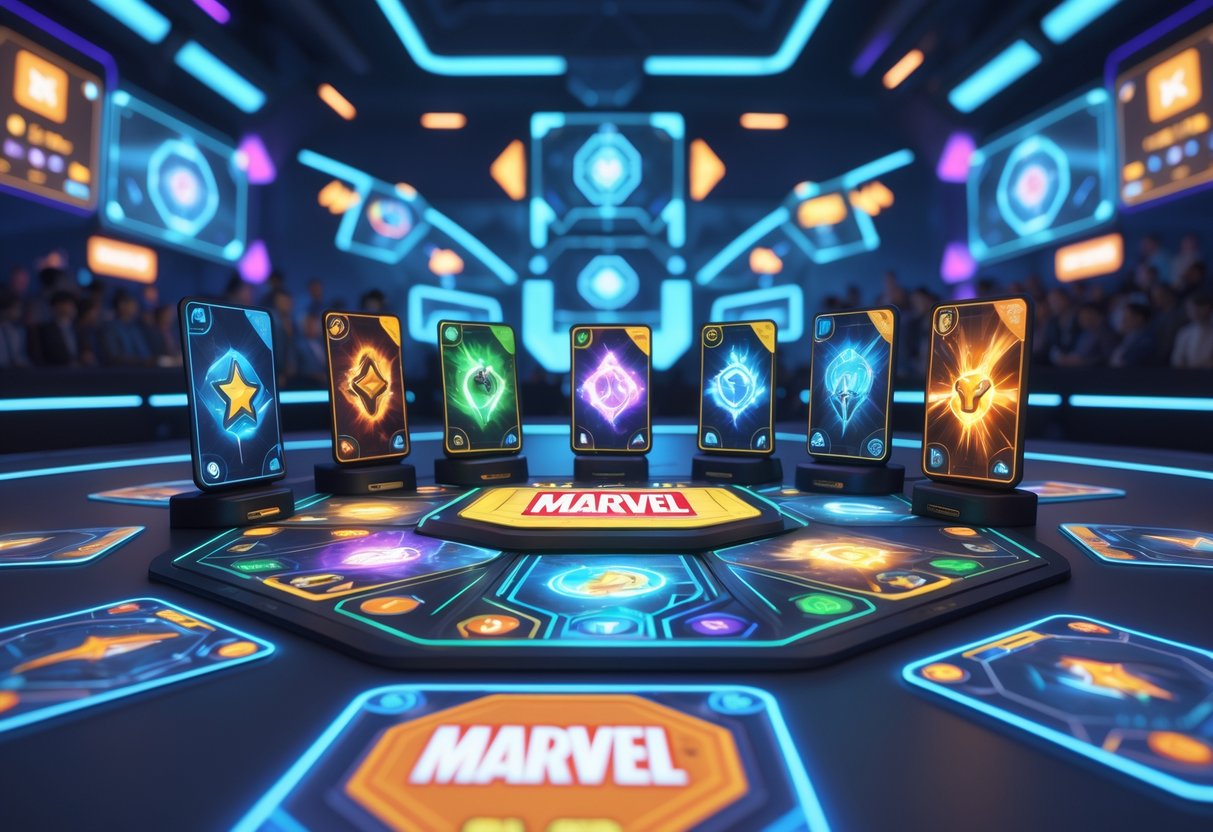
Marvel Snap borrows a lot from classic card games but really does its own thing. The matches are lightning-fast, and the snap mechanic adds a whole layer you just don’t see in games like Hearthstone.
Marvel Snap vs. Hearthstone
Hearthstone ran the digital card game scene for years. Tournament games can drag on for 30-45 minutes. Players bring multiple decks and play elimination formats.
Marvel Snap flips that. Games wrap up in 3-6 minutes, tops. The snap mechanic adds bluffing, which Hearthstone just doesn’t have.
Main differences:
- Match length: Hearthstone tournaments take hours, Snap events wrap up quickly
- Deck strategy: Hearthstone loves sideboards and tech, Snap is all about mastering your main deck
- Spectator experience: Snap’s speed makes it more fun to watch, especially for new viewers
Hearthstone still has bigger prize pools, but Snap’s accessibility might pull in more viewers as it grows.
Uniqueness of Marvel Snap’s Competitive Play
The snap mechanic turns every match into a mind game. You have to read your opponent and decide when to go all-in.
It honestly feels more like poker sometimes than a typical card game. Winning tournaments means you need good decks and good reads.
What’s unique about Snap:
- Cube economy: You win or lose multiple cubes per match
- Location variance: Random locations force you to adapt every game
- Retreat timing: Knowing when to cut your losses is huge
The Marvel license helps too. Everyone knows the characters, so it’s way easier to get new players hooked compared to fantasy card games.
Lessons from Other Communities
Successful card games always build strong communities and help players learn. Hearthstone got huge because streamers and YouTubers broke down tough plays for new players.
Marvel Snap’s community already puts out deck guides and strategy videos. Still, the competitive scene could use more clear paths for new players to get involved.
What Snap can take from others:
- Structured seasons: Regular cycles keep people coming back
- Amateur tournaments: Grassroots events build hype before the big prize pools roll in
- Creator programs: Supporting content creators grows the whole scene
Other games struggled when devs ignored the community. Snap’s devs seem to actually listen, which is a good sign for the future.
The mobile-first design could really shake up esports accessibility. Unlike PC-only games, you could play Snap tournaments anywhere with a decent connection.
Community Resources and Competitive Networks
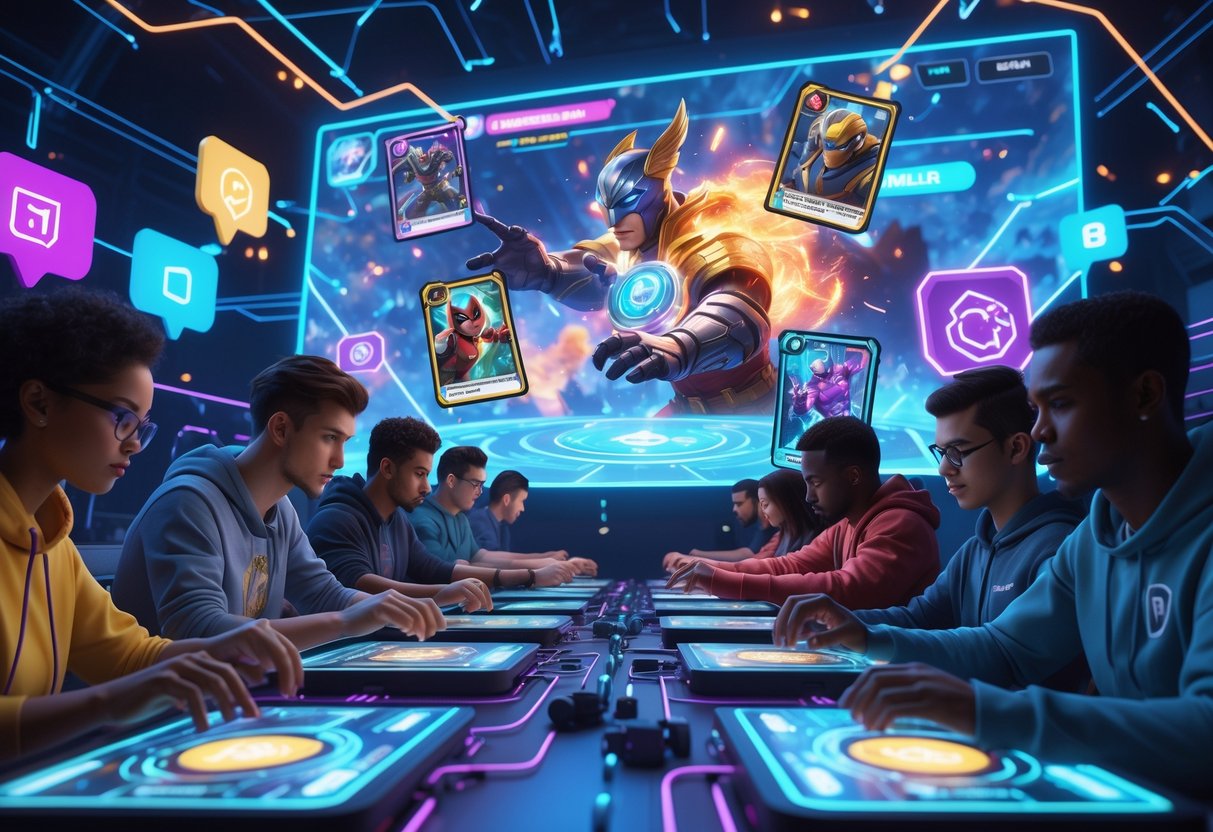
Strong community connections and dedicated resources hold Marvel Snap’s competitive scene together. These networks offer deck guides, strategy talk, and chances to link up with other serious players.
Marvel Snap Zone Guides
Marvel Snap Zone is basically the go-to database for competitive players. You can search and filter their deck lists, and even sync them with your own collection.
Their deck section breaks down top strategies from tournaments. Each deck comes with card explanations and play tips. They update meta snapshots regularly so you always know what’s working at high ranks.
Marvel Snap Zone also runs Cube Rush events. Every Wednesday at 6:30 PM EST, content creators race to earn the most cubes in a set time.
They keep a Hall of Fame with winning deck lists from past events. You can grab these decks and tweak them for your own collection. A lot of these lists come straight from tournament winners.
Reddit Forums and Discussions
Reddit has two main competitive Marvel Snap communities. The r/marvelsnapcomp subreddit sticks to competitive play and ranking up.
People here share high-level strategies and talk decks. Players post climb reports and break down meta shifts. Moderators keep things focused by enforcing quality rules.
r/MarvelSnap covers the general game but still hosts competitive threads. You’ll see broader chats about balance changes and new card releases. Both subs help players figure out the current meta.
Weekly threads dive into deck building and ranking strategies. A lot of infinite-rank players drop their insights and answer questions from those still climbing.
Finding Teams and Practice Groups
Several Facebook groups cater to serious Marvel Snap players. Marvel Snap Competitive Community brings together folks who want organized practice sessions.
Discord servers let competitive players chat in real time. Many content creators run their own servers, so you can find practice partners pretty easily. These groups often set up internal tournaments.
Tournament organizers usually recruit through these networks. Events like a 128-player tournament with a $50 prize pool started with community connections. Sure, prize pools are small, but these events really help the scene grow.
Practice groups let you test decks before you hit ranked. Lots of players form small teams to share strategies and practice matchups together.
How to Break Into Competitive Marvel Snap

If you want to get into Marvel Snap’s competitive scene, you’ll need to join tournaments, make connections in the community, and keep sharpening your skills. The quickest way in usually starts with Discord tournaments and building your reputation with other competitive players.
Steps to Enter Tournaments
The Marvel Snap Battlegrounds Discord server acts as the main hub for tournaments. This community-run spot hosts regular events for all skill levels.
Jump in by joining the Discord and checking out their tournament rules. Most events ask you to register early and hit a certain Collection Level or rank.
Tournament Types Available:
- Weekly community tournaments
- Seasonal championship events
- Conquest mode competitions
- Battle mode tournaments
Try Marvel Snap’s official competitive modes first. Conquest mode works great for practice since it uses similar deck-building rules.
Most tournaments run a Swiss format or elimination brackets. You’ll usually need a few decks and have to adapt your strategy between rounds.
What You’ll Need:
- Discord account
- Reliable internet
- Multiple competitive decks
- Screenshot tool for reporting results
Talk to other players during events. The competitive crowd is still pretty small, so making a good impression can matter a lot.
Building a Reputation in the Scene
Showing up to tournaments regularly helps you build your rep. People notice when you keep showing up and improving.
Share what you know by making content or joining community discussions. Plenty of top players started out posting deck guides or match breakdowns on Reddit or Discord.
Ways to Build Recognition:
- Stream your matches on Twitch
- Write strategy articles for the community
- Help newer players learn advanced tricks
- Stay active in Discord chats
Keep things respectful during matches. People in this scene value good sportsmanship, win or lose.
Work with other competitive players in practice sessions. Top players often scrimmage each other to test out new ideas.
Think about joining or starting a team for bigger events. Team tournaments give you more exposure and help you network.
Long-Term Progression and Improvement
Track how you do in tournaments using a spreadsheet or app. Record your win rates with different decks and look for patterns in your losses.
Watch pro players’ streams and tournament matches. Focus on their snapping decisions and how they play around tricky locations.
Key Areas for Development:
- Snap timing and bluffing
- Adapting to the meta and building decks
- Strategies for specific locations
- Managing cubes across matches
Set goals that make sense for where you are. Maybe aim for regular top-16 finishes before you go chasing wins.
Stay on top of the meta by following Marvel Snap Zone and other resources. New cards and balance changes can shake things up fast.
Play ranked matches often to keep your mechanics sharp. Higher-level ranked play is solid practice for tournament pressure.
If you’re doing well in tournaments, consider getting coaching from established players. Feedback from someone experienced can help you improve much faster than going solo.
Future of Marvel Snap’s Competitive Scene
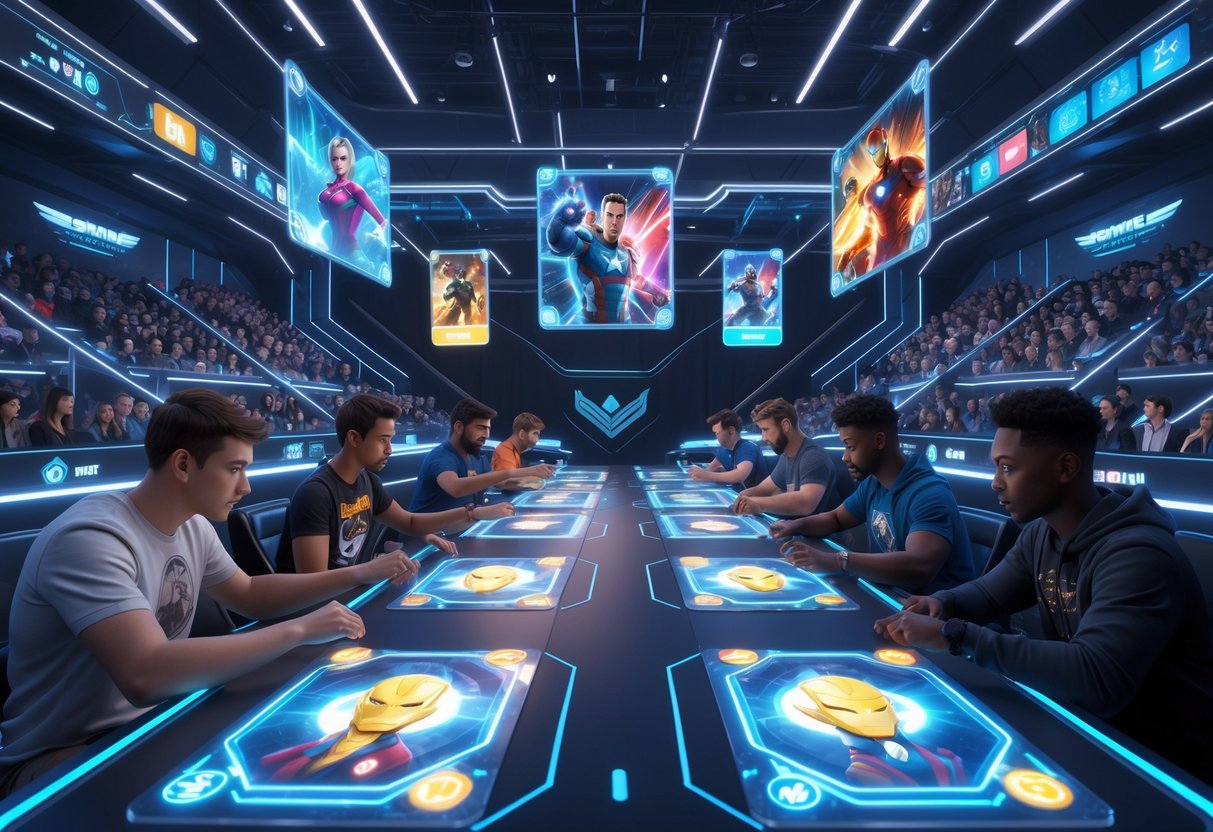
Marvel Snap’s competitive future looks promising. New features like Leagues are rolling out, and community-driven tournaments keep gaining steam. The developers are clearly working on tools and events that could really elevate the game.
Upcoming Features and Events
Second Dinner has rolled out Leagues as their latest competitive system. You compete in small groups against players at your skill level for a set period. Rewards depend on where you finish on the leaderboard.
The Golden Gauntlet Championship series is Marvel Snap’s push into organized play. These events bring the community together and show off the game’s fast-paced, high-stakes matches.
Battle Mode still serves as the backbone of competitive play. You can challenge players directly, skipping the usual matchmaking. Community organizers use Discord and Battlefy to run online tournaments.
Recent tournaments have grown from $50 prize pools to bigger events with 128+ players. Formats usually include Swiss rounds and single-elimination brackets. Most events only require one deck, making things easier for newer players.
Potential Growth Opportunities
Marvel Snap’s unique gameplay brings some real advantages for competitive growth. Matches run shorter than most card games, which helps tournaments stay viewer-friendly for streams.
Because the game is mobile-first, tournaments can happen anywhere. You don’t need fancy gear or a specific setup to compete. That accessibility could help build a bigger competitive base than PC-only card games.
The pool system makes it easy to create tournament categories. Organizers can run Pool 2 or Pool 3 events, giving newer players a shot without facing folks with massive collections.
The cube system adds a layer of strategy that works well in tournaments. Deciding when to retreat or double down creates tense moments for both players and spectators.
Grassroots growth looks strong so far. Tournaments popped up quickly after Battle Mode launched, which says a lot about the community’s interest.
Community Hopes and Developer Plans
Ben Brode has said Battle Mode is just the start of Marvel Snap’s competitive vision. The dev team sees community tournaments as the base for bigger things.
Players keep asking for more developer support for competitive play. Lots of people want official tournaments, sponsored events, and structured ladders beyond the current ranked system.
Developer priorities include better tournament tools and more competitive features. Second Dinner seems committed to testing new formats like Leagues before going bigger.
The community hopes Marvel Snap will follow successful models like Hearthstone’s tournament structure. Players want regular competitive seasons, official championships, and clear paths to pro play.
Organizers hope for better in-game tournament tools. Right now, you have to use outside platforms, but built-in features would make running tournaments a lot easier.
Frequently Asked Questions
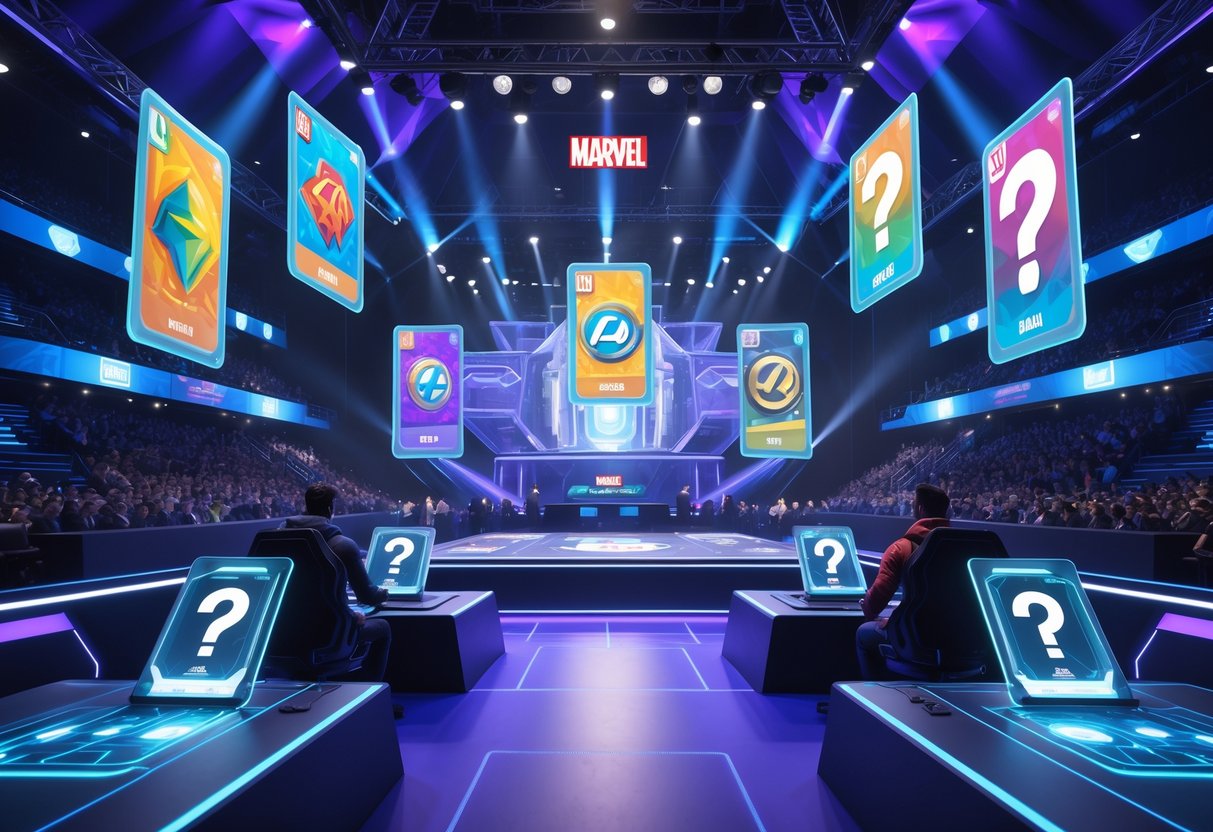
New players jumping into Marvel Snap’s competitive scene have a lot of questions about decks, ranking, and tournaments. Knowing the basics can help you make better decisions and find your way into organized play.
What are the top card decks currently dominating competitive play?
The Marvel Snap meta changes often with balance updates and new cards. Pool 3 decks, especially Destroy builds with Carnage and Venom, stay strong in competitive play.
Control decks with Professor X and Storm do well in high-level matches. These decks lock down locations and force tough choices.
Zoo decks, which fill the board with cheap cards, remain consistent at all skill levels. Ant-Man and Squirrel Girl offer reliable early-game plays.
Movement decks with Heimdall and Multiple Man can surprise opponents. They take more practice but can pay off in tournaments.
Can you share some strategies for climbing the ranked ladder in Marvel Snap?
Snap timing is huge as you climb. Snap early if you have a strong opener, but don’t snap late when it’s easy for your opponent to bail.
Stick to one or two deck types instead of switching constantly. This helps you master the play patterns and really know your win conditions.
Watch how opponents retreat. Good players retreat often to save cubes, so don’t take it personally if they leave early.
Keep track of your win rates with different decks over several sessions. This shows which decks actually work for you, not just which ones feel fun.
Where can I find information on upcoming Marvel Snap tournaments?
The snap.fan website runs regular tournaments with clear rules and prizes. Most events require you to join Discord and check in before matches.
Reddit communities like r/marvelsnapcomp often post community-run tournaments. These might have different formats and entry rules than official events.
Marvel Snap’s official social media shares news about big competitive events. Following those channels helps you catch registration deadlines.
Third-party organizers such as CommunityGaming host structured events with Swiss rounds and top cuts. These usually need deck submissions and stick to strict timing.
How does the matchmaking system work for competitive matches?
Marvel Snap uses a hidden MMR along with your visible rank. You might face players from other rank tiers if your skill rating matches up.
At Infinite rank, matchmaking changes. The system tries to pair you with other Infinite players, no matter your exact number.
Cube stakes also play a role. If you snap a lot, you’ll see more opponents who play for higher stakes.
Tournaments use their own matchmaking. Events usually feature Swiss pairings and then single-elimination for the top players.
What are some tips for new players wanting to break into the competitive scene?
Try to hit Infinite rank at least once. This shows you’ve got the basics down and can hang with serious players.
Join Marvel Snap Discords, since that’s where most tournament announcements pop up. Competitive players share strategies and talk meta in these spaces.
Stick with one deck instead of swapping all the time. Tournaments often need you to submit a deck, so being comfortable with your pick matters more than variety.
Watch top streamers and tournament VODs to pick up advanced techniques. Focus on their snap timing and retreats, not just the cards they use.
Start with smaller community tournaments before jumping into big events. These give you valuable experience with formats and timing.
How often are balance updates released, and how do they impact the meta?
Marvel Snap usually drops balance updates about once a month, but honestly, the timing shifts depending on how healthy the meta feels.
These updates can completely shake up which decks actually work in competitive play.
Developers tend to buff or nerf the strongest strategies out there. If your favorite deck takes a hit, you’ll probably need to adapt fast or just jump to a different archetype.
New cards, though, have an even bigger impact than balance tweaks. Sometimes a fresh card will open up whole new deck ideas or suddenly make an old strategy way more powerful.
If you play competitively, you really have to keep up with patch notes and tweak your decks all the time. What crushes today might flop after the next update.
Try out new builds on ladder before you risk them in tournaments. Sometimes, a card everyone ignored turns into a hidden gem after a balance change.


